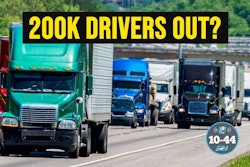DOT’s Research and Special Programs Administration is revising, effective July 1, 2004, the incident reporting requirements of the hazardous materials regulations and incident reporting form. Major changes include collecting more specific information, expanding reporting exceptions, expanding reporting requirements to persons other than carriers, reporting undeclared shipments and reporting non-release incidents involving cargo tanks. For a copy of the rule, visit this site and search Docket No. 5013.
International Brotherhood of Teamsters is pushing for passage of legislation (H.R. 2863) that makes the owners of intermodal truck chassis responsible for inspecting, maintaining and repairing the equipment provided to motor carriers.
FMCSA plans to survey non-commercial drivers on their recognition and awareness of the agency’s Share the Road Safely Campaign. For more information, visit this site and search Docket No. 16324.
Occupational Safety and Health Administration has issued two fact sheets describing the OSHA inspection process and the agency’s role in investigating occupational deaths. “OSHA Inspections” and “OSHA’s Role When A Worker Dies on the Job,” are available at this site.
FMCSA’s Office of Research and Technology is sponsoring a forum in Washington Jan. 11 to discuss creation of public-private partnerships. For information, contact Albert Alvarez at [email protected].
John Doe spent the night in a roadside motel because of snow the previous day. As he arose, he saw sunshine and a fully plowed Interstate.
Doe let the truck idle as he purchased a thermos full of hot coffee at the motel restaurant, then cautiously pulled out onto the now bare 4-lane highway. He slipped through the gears and was soon rolling along at a moderate speed, feeling more comfortable as the heater started to throw warm air into his environment.
Aware that the area he was in was subject to crosswinds, Doe watched carefully ahead for blowing snow. Sure enough, just as he was getting really settled into his seat, he spotted a wall of white, blowing in from the right and preventing any chance of seeing the pavement a few hundred feet ahead. Doe gradually downshifted one gear at a time and brought his vehicle to a mere 10-mph cruise.
It turned out that Doe got more than he’d bargained for. He soon felt telltale signs in the steering that he was on glare ice. As if that weren’t enough to raise his blood pressure, the same crosswind that was creating the blowing snowflakes suddenly gusted against the flat side of his van trailer. Unfortunately, given the near-total lack of tire adhesion, this resulted in a jackknife.
Fortunately, there was no traffic in either lane of his travel direction. Unfortunately, the jackknife was rather acute – sharp enough to bend the rig to the point where the battery box got damaged. A trucker-friendly state trooper was on the spot and offered to substantiate the fact that Doe had driven through the blind spot in the road quite cautiously. The rest of his trip was uneventful.
Doe’s fleet safety director sent him a warning letter, telling him he should have been in the left lane where there was less snow. The letter also criticized him for “failing to shift gears or steer out of the jackknife after losing traction.”
Doe contested the letter’s conclusion that the accident had been preventable and asked the National Safety Council’s Accident Review Committee for its opinion. The committee concluded that downshifting cannot cure a loss of traction, and that appropriate steering cannot always straighten a rig out, even at low speeds. Also, the panel ruled that traveling at only 10-mph in the fast lane would have been both unsafe and illegal. Not only would this have subjected Doe to a rear-end collision, trucks were banned from the faster lane. The committee thus ruled that the accident was not preventable.









